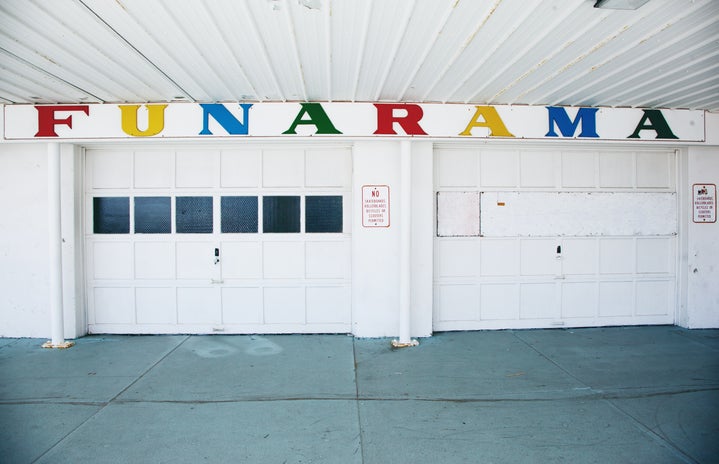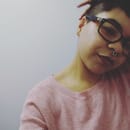While some people might see the word poetry and immediately think “boring,” “stuffy” or “lofty,” there’s a type of it that’s called slam poetry. Rest assured, you won’t fall asleep with any of these. There’s no careful reading or a monotone voice—none of the clichés one associates with poetry readings. Like the name suggests, a good slam poet will hit you with their words, make you experience their poem and feel the emotion behind it.
Chicago. 1984. Marc Smith started an open mic night in which poets would “perform” their poems instead of just reciting them. Armed with only their voice, their body, and their facial expressions, they’re as much actors as wordsmiths. Smith saw this as a way to go against the more traditional poetry scene, which he thought was too rigid and cold at the time. He believed poetry needed to be revitalized and that people’s interest needed to be sparked. He argued that people rarely listened to poetry anymore because there was no connection between poet and audience. So, he created poetry slams: a new kind of poetry reading while equally being inclusive and entertaining.
Slams are competitions where different poets present their work and are then disqualified, or they move onto the next round until only the winner is left. How does it get decided, who continues, and who is eliminated? The audience! See, most slams have between three to five judges chosen from the audience itself. Smith is often credited for this key feature thanks to his efforts to involve the audience more and have the scene be more inclusive. The judges award a certain amount of points to each performance, and the lowest in each round is disqualified. The process continues for a few rounds until a winner is selected. This way poets have to make sure that their words will resonate with people. Poems should be relatable or carry emotional impact. Not only this, but the poets need to be able to convey it, express their thoughts and emotions to the audience with only their voice and body.
Slam poets often talk about different subjects like feminism, racial issues, police violence, LGBTQ+ issues, mental health, relationships, sex, love, growing up and so much more. It’s gained a lot of traction with younger poets—from teenagers to adults in their early thirties—as a way to vent or rant. It’s a very powerful outlet. People often feel identified or represented in these kinds of poems. There’s bound to be something to interest you!
If you’re interested in learning more, we’ll show you three poets very recognized in the slam community that you can use as a starting point. A way to dip your toes in the water, so to speak, and see if any of them catch your attention!
1. Olivia Gatwood
Olivia writes a lot about being a woman and the experiences women go through, such as catcalling, being disrespected, having to toughen up against the world, dealing with the ridiculous expectations society imposes…. Some of her more famous poems include “Manic Pixie Dream Girl,” “Alternate Universe In Which I Am Unfazed By The Men Who Do Not Love Me” and “Collapse the Economy.” In 2017, she published her first book, New American Best Friend (New American Best Friend), which talks about growing up as a girl in Albuquerque, New Mexico. You can find her on Insta (@oliviagatwood), Facebook (Olivia Gatwood) and Twitter (@oliviagatwood).
2. Melissa Lozada-Oliva
Melissa is from a Latinx family, and she constantly involves this in her work. Often describing herself as an unapologetic, Latina feminist, her words are often fierce and biting. A good example of this is her poem, “Bitches”, which describes the women in her life. The page Remezcla partnered up with her to produce a video about it. You can find it on her Facebook page (Bi**hes). Some of her other poems include “My Spanish” and “If I Got Paid For All Of My Emotional Labor.” Check her out on Instagram (@ellomelissa), Facebook (Melissa Lozada-Oliva), Twitter (@ellomelissa). To buy her chapbook titled peluda on Amazon click here.
3. Neil Hilborn
Neil is considered the most famous slam poet on the scene. You’ve probably already seen or read snippets of “OCD,” a poem which describes his relationship with a past girlfriend while having to deal with his mental illnesses. He’s been diagnosed with Obsessive Compulsive Disorder and Bipolar Disorder. He talks about living with these disorders and his personal experiences in poems like “The Future” and “Joey.” His work is often darkly humorous, self-deprecating and very descriptive. These can be found in his first book, Our Numbered Days, which you can buy here. This past month he released another, The Future. You can find that one here.
All three of these poets are part of a group named Button Poetry. Founded in 2011, it’s an organization based out of Minnesota which seeks to promote performance poetry. They have various social media pages through which they promote the artists with videos of performances, images, and quotes. You can check out their page by clicking this link. You can also donate to their Patreon by clicking here, or buy one of their many published works in the store. If you want to see more slam poets, give their YouTube channel (ButtonPoetry) a quick glance, something is bound to spark your interest!


